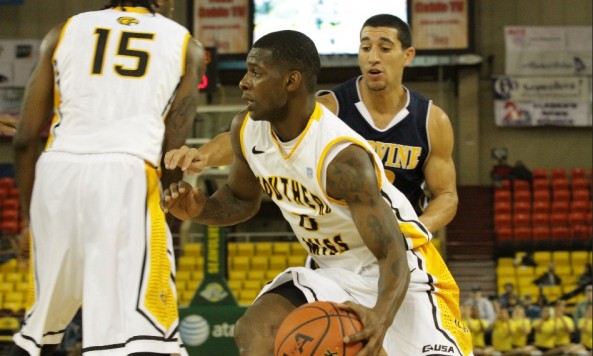The cupboard isn’t exactly stocked in South Carolina. There were three players who played at least 60% of the team’s minutes in 2011-12, and now all three are gone. Malik Cooke graduated. Anthony Gill transferred to Virginia. And Damontre Harris transferred to Florida. That leaves football player Bruce Ellington (who may or may not play hoops) and sophomore (to be) Damien Leonard, who was one of the most inefficient players in the country.
So it was no surprise when LaShay Page to South Carolina rumors cropped up last week. Now it’s official. The Southern Miss transfer is enrolling at South Carolina and should be eligible immediately. The SEC bizarrely makes it more difficult for graduate transfers to enter the conference, and while Page would be able to go to virtually any other place in the nation and be eligible immediately due to his degree, he’ll need a hardship waiver to play for the Gamecocks. However, that is expected to happen.
Page played 87% of Southern Mississippi’s minutes last season, which was more than all but two Conference USA players. The 6-2 guard was in his second season at USM after transferring from Chipola. He’ll be a senior and have one year of eligibility.
The system Page played in was one that moved the ball around. No single starter attempted more than 23.9% of the shots. Page took 19.5%. He was primarily a spot up shooter and 63% of his shots came from beyond the arc. He only made 35.2% of those shots, but that’s considered good at South Carolina where the team made a measly 32.7%. His shot improved from 34% as a sophomore, so with a similar progression he could become a valuable 3-point threat.
The rest of his game is nondescipt. He doesn’t turn the ball over, but this is negatively mitigated by the fact that he doesn’t create opportunites for his teammates. He doesn’t commit many fouls, and he doesn’t draw many fouls. He just kind of is.
The Gamecocks have a long road ahead. Page brings a veteran presence, and will be counted on to eat minutes while the young players develop. It should be a good fit for both the player and the program.























